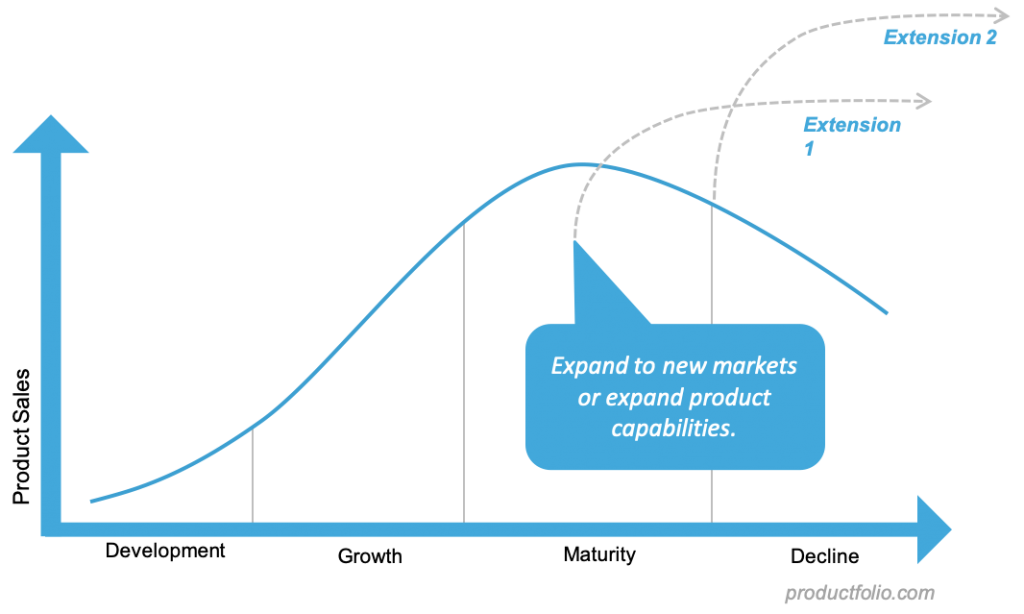The Product life cycle is a concept that most companies, especially marketing teams, are well aware of. However, experience has shown that knowledge is not equal to effective application. Organizations often fail to make the most of the idea strategically. There are different stages in the product life cycle. What product managers are to do during the process, expectedly, varies from one stage to the other. Recognizing the stage of a product is vital for knowing how to approach it.

The Product Life Cycle
The life cycle of a product refers to the typical stages that a product is believed to pass through. This is based on what has been observed repeatedly over time. The concept is particularly relevant for management and marketing decisions as well as for preparing effective product plans.
Four main stages have been identified in the life cycle of a product. They are:
- Development stage
- Growth stage
- Maturity stage
- Decline stage
1. Development stage
Also known as the introduction stage, this phase describes when a product is created and put on the market. The company with a novel offering usually has little certainty about there being real demand. The product is not yet popular and so sales are still low.
During the market development stage, companies practically have to create demand for the product, except it is familiar or highly-anticipated. This is risky – the kind of risks that most businesses won’t take.
The uncertainties make many companies now adopt a “used apple policy,” as Theodore Levitt puts it in a Harvard Business Review report. They wait for another organization to take the first bite of the apple and then follow suit if the signs are encouraging.
Product Management During the Growth Stage
In this first stage, Product managers are hyper-vigilant to find product-market fit. Features don’t need to be perfect and often are not robust, but they get you into the game, so the business can have those deeper conversations with customers to figure out what really resonates.
2. Growth stage
The market growth stage is when more and more customers start to adopt the product. At this point, the existence of a market is proven and such grows swiftly. The company, therefore, ramps up marketing drive to further increase profits, based on the demographics of early buyers.
A major challenge the originator would have to contend with from here on, however, is competition. Having observed that the product has good demand, other companies come into play. The original creator now needs to find a means of making his brand preferable.
Product Management During the Growth Stage
By this stage, product-market fit is answered, and the business is ready to accelerate growth based on an understanding of the patterns that have been validated. The team starts to move quickly to build out the key features, keeping a close eye on competitors for feature gaps and customers, in terms of what they need and what would help them differentiate their offering in the market.
3. Maturity stage
This is the phase when the competition has become so intense that profits start to plateau. Growth decelerates and simultaneously more competitors are entering the market. The entry of more and more companies reduces the originator’s share of the market and saturation becomes an issue.
The majority of your target users already use your product or a rival’s that is similar to it. This makes companies turn more to the use of prices to get one over the competition. Efforts are geared first towards preserving the share of the market already controlled and then maybe securing a little more.
Product Management During Maturity Stage
At this point, Product Management starts to shift to optimization, in order to make more out of the existing customers and traffic they already have. Increasing conversation rate and increasing engagement of users in order to reduce churn, can go a long way toward bringing in continued value for the organization, even while the external opportunity is slowing.
4. Decline stage
As the name suggests, the market opportunity is actually decreasing at this point. New customers are rapidly shrinking and existing customers are leaving. This is a natural part of the lifecycle and with technology products in particular, generally takes 10-15 years to reach. This happens because of consolidation of competitors into a few very strong competitors that are absorbing market share by offering very low prices, or due to technical innovation that is commoditizing the value of the product.
Role of Product Management During Decline
The name of the game at this point is to extend the life of the product through ‘product extension’. This can be done through innovation of either the product or the market. For example, offering new and extended features to your existing market, or offering your existing capabilities to a new audience that isn’t use to the value you have to offer. In both of these approaches, Product Management can bring new life to a product and thus extend its life.